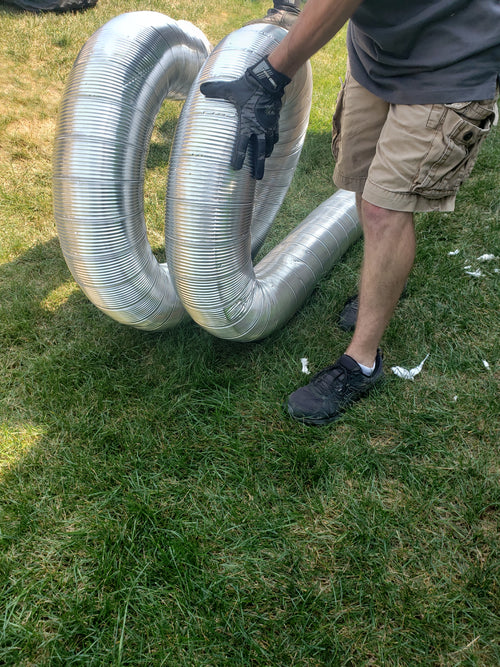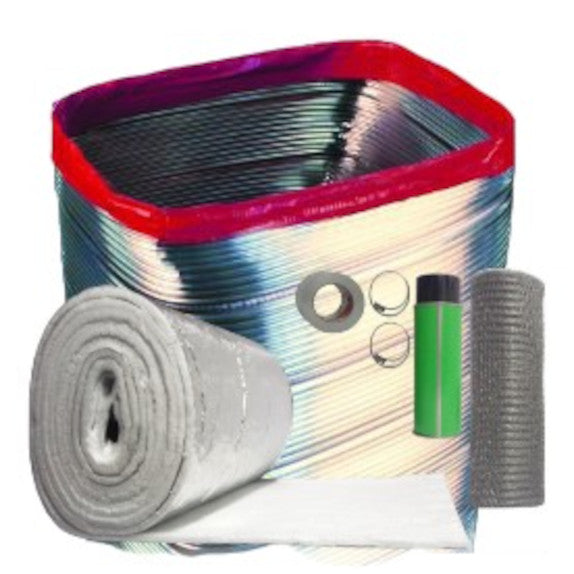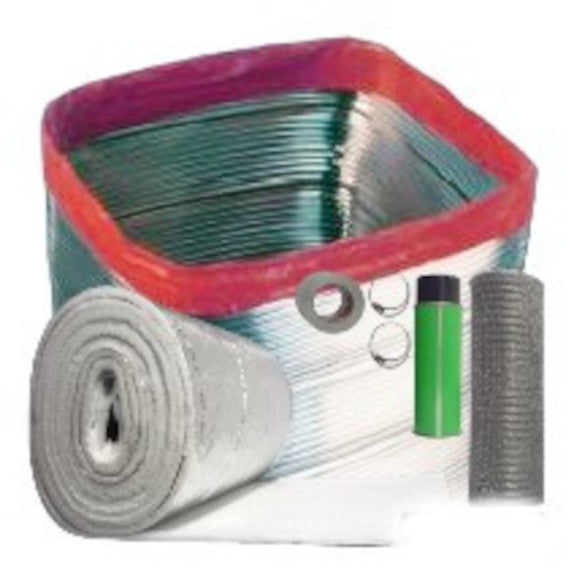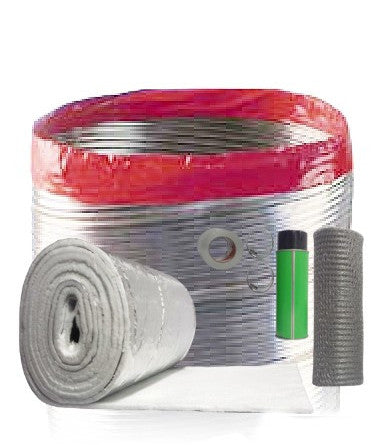Do You Need to Insulate Your Chimney Liner?
July 19, 2023

Chimney liner insulation reduces the heat transfer through a brick chimney. Insulation is critical for the safety of a thin brick chimney especially if it is touching combustible material. The chimney liner insulation will significantly reduce the heat transfer through the brick and will make your chimney a zero clearance chimney where framing can touch the outer wall. The chimney liner insulation will also keep the flue temperature hot, which prevents the flue gas from condensing into creosote for a wood stove. This is especially good for chimneys in colder climates. Installing the correct chimney liner is also a critical step for safety. If a chimney liner for a wood stove is installed in a brick chimney, enough heat transfer can be generated to melt or combust any framing and building materials around your chimney with zero clearance.
Gas or oil burning appliances have a significantly lower flue temperature which do not have enough heat transfer through a brick chimney to cause nearby framing to combust. There is never a requirement for insulating a chimney liner for a gas or oil burning appliance like there is for wood stoves. However, insulating a chimney liner for a gas appliance will help the draft to ensure that your appliances are venting properly. The lower flue temperature has a tough time generating heat to increase the draft. The insulation will help the flue gas become hotter and draft up the chimney. Insulation can also prevent liquid condensation from running back down the liner and into your appliance.Insulated Chimney Liner vs Non-Insulated Chimney Liner
An insulated chimney liner is superior over a non-insulated chimney liner. An insulated chimney liner will increase the flue temperature and make the draft better. Insulation will also reduce the creosote or condensation in the chimney liner. It is very important to install the correct size chimney liner for the heating appliance, never undersize the flue liner just to accommodate the insulation. Keep in mind a 1/2" insulation blanket will increase the size of the liner by 1". A chimney liner size reduction can cause a smoky house for a wood stove and insufficient draft for a gas or oil burning appliance. A clay lined chimney in good condition will allow you to install a chimney liner for a wood stove without the need for the chimney liner insulation. Also, If your current flue is in good condition, insulating the liner for a wood stove isn’t mandatory. If you have the space, it is much better to insulate the chimney liner.
How To Insulate A Chimney Liner

There are a few different ways to insulate a chimney liner. The first is the insulation blanket wrap. This type of insulation will need to be physically wrapped around the chimney liner. The insulation is available in 1/2" and 1/4" thickness. The 1/2" thick insulation will make the chimney zero clearance and 1/4" insulation will make the chimney 1" clearance for unlined brick chimneys.
Installing the insulation blanket wrap:
- Step 1: Glue the insulation to the liner.
- Step 2: Use foil tape to tape the seam of the insulation once it is wrapped around the liner.
- Step 3: Sleeve a wire mesh sock over the insulation and the liner. The mesh sock will act as a suit of armor for the insulation and prevent it from tearing as you feed the liner down the chimney.
- Step 4: Fix a hose clamp around the insulation and the liner at the top of the chimney liner and at the bottom of the chimney liner to secure everything.

The next way to insulate the chimney liner is the easiest way and is done by purchasing a pre-insulated chimney liner. The pre-insulated chimney liner will come already wrapped and have an outer aluminum chimney liner to prevent any damage to the insulation. The insulation for the pre-insulated liner is 1/2" thick and will make an unlined brick chimney zero clearance. The pre-insulated chimney liner is best for tight chimneys and chimneys with a lot of jagged edges. The outer aluminum liner will be able to take the most abuse when installing the liner down the chimney.
If you are installing a rigid chimney liner, there is snap wrap insulation that is best and easiest to install for a rigid liner. The snap wrap insulation simply wraps around the liner and snaps together. This alleviates the need to cut the blanket wrap into sections when you are connecting the sections of rigid line together. The snap wrap insulation is available in 1/2" thick insulation and will make the chimney zero clearance for an unlined brick chimney.
The last way to insulate the chimney liner is by pouring a vermiculite based insulation mix down the chimney and around the liner. This will require a block off plate to be installed directly under the liner to prevent the insulation mix from running down the chimney into a fireplace or a clean out. 1" of insulation mix all the way around the liner will make the chimney zero clearance for unlined brick chimneys. The insulation is sold in a 45 pound bag that will get mixed with roughly 5 to 6 gallons of water until the consistency is like a moist fill dirt. This will not be a slurry like a cement mix, it will be very granular. This is the most labor intensive way to insulate a liner. Though this method is the best when the chimney is in rough shape and can help slightly with the structural support.
DIY Center
(AKA ‘The Rockford Files’)
From video tutorials to product walkthroughs, we have a variety of DIY resources just for you! Click the button below to view our entire library.









